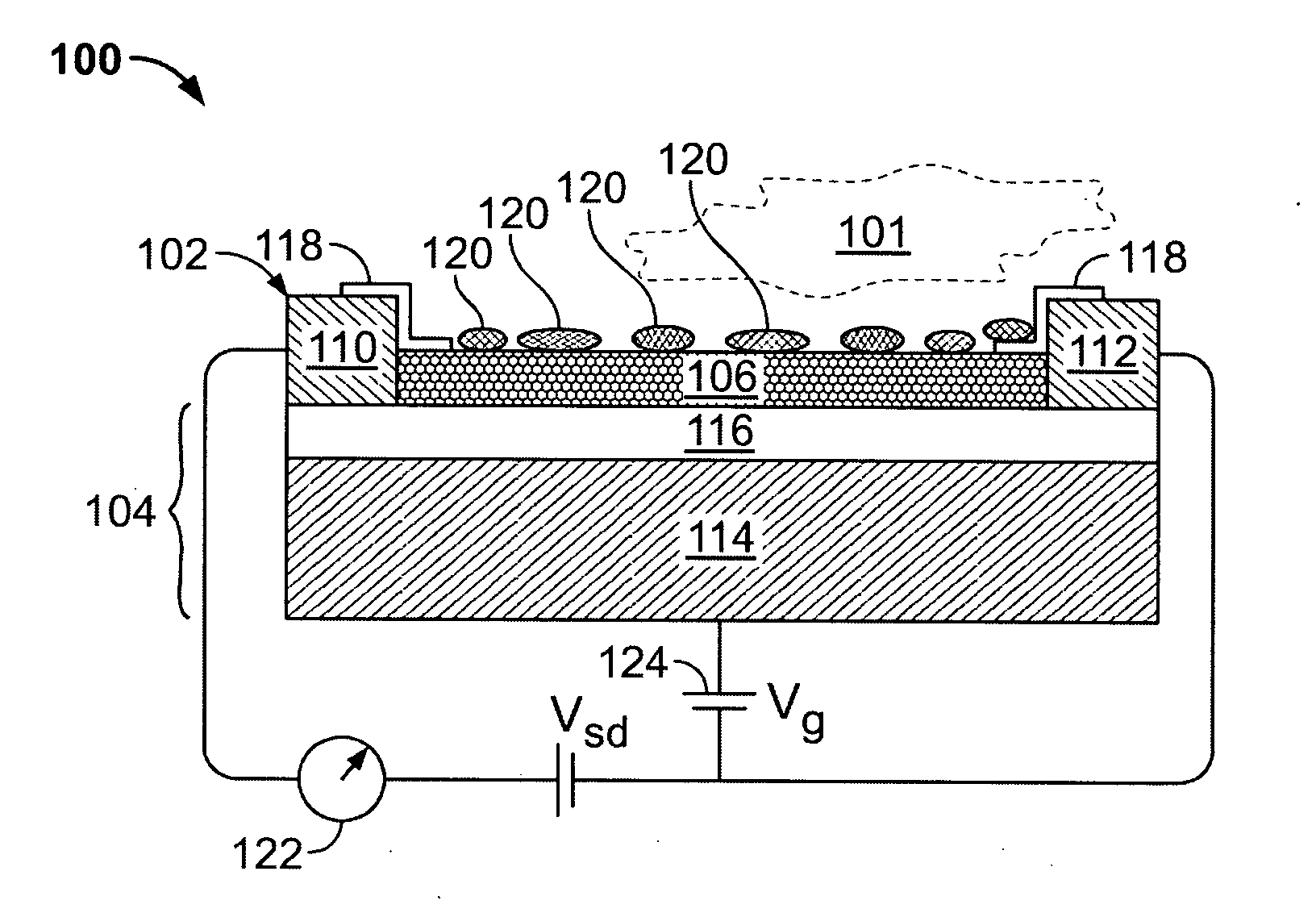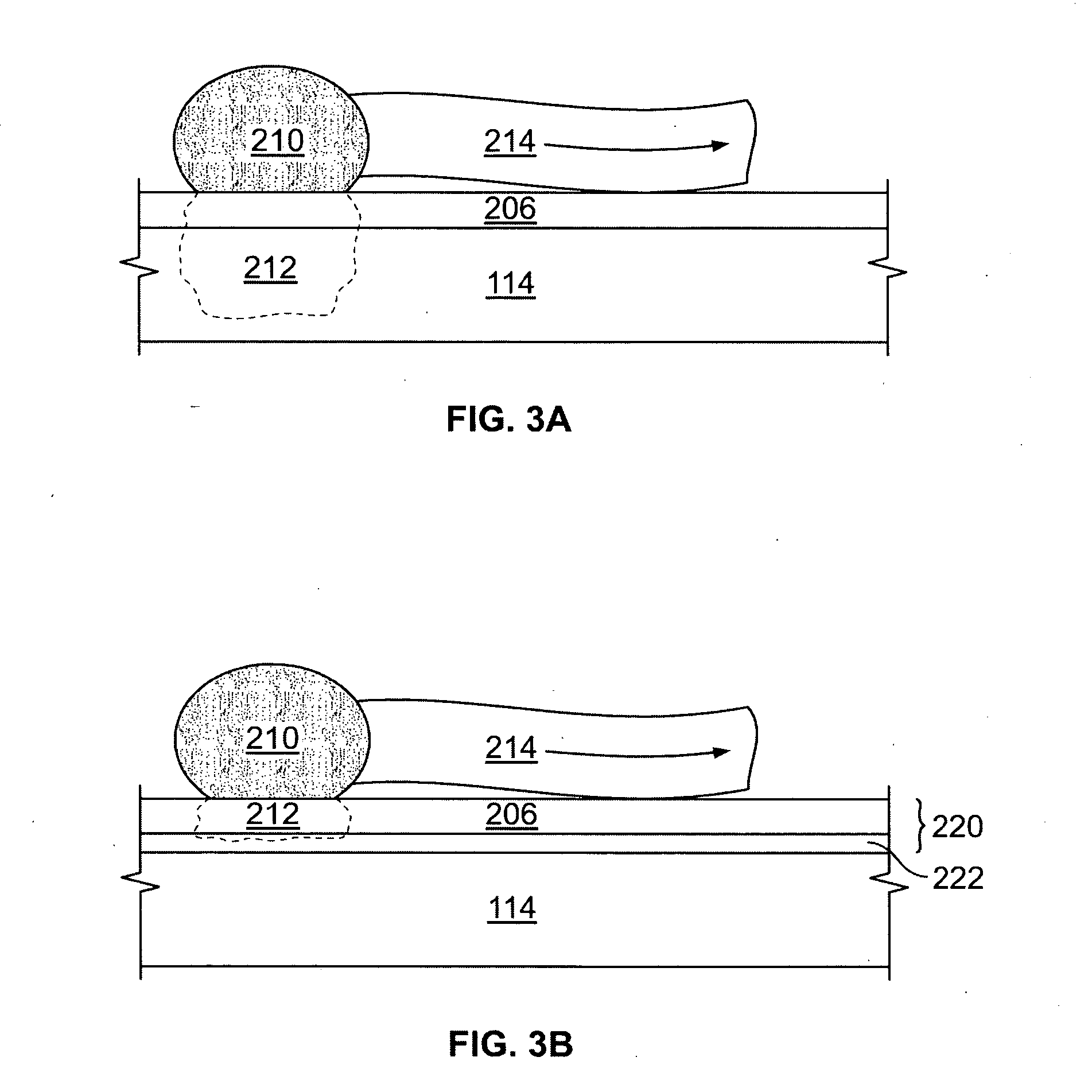Remotely communicating, battery-powered nanostructure sensor devices
a nanostructure sensor and remote communication technology, applied in the direction of electric signalling details, fire alarms, instruments, etc., can solve the problems of large amount of power, and relatively small amount of power, and achieve the effect of increasing range and low power consumption
- Summary
- Abstract
- Description
- Claims
- Application Information
AI Technical Summary
Benefits of technology
Problems solved by technology
Method used
Image
Examples
example a
[0118] Nanotube Network CO2 Sensor with remote measurement circuitry. An exemplary NTFET H2 sensor with remote measurement circuitry was prepared as follows. A degenerately doped silicon wafer with a silicon oxide film was coated with carbon nanotubes in a random network, as described in the above-incorporated application Ser. No. 10 / 177,929. A plurality of nanosensor devices 500 were thus formed, one of which is shown schematically in FIG. 5. Titanium contacts 35 nm thick covered with gold contacts 100 nm thick were deposited and patterned by photolithography and lift-off to form opposing contacts 502, 504. Contacts 502, 504 each comprised a plurality of interdigitated portions disposed over a generally rectangular region 506. A network of randomly oriented nanotubes 508 was disposed over the silicon substrate in electrical contact with interdigitated portions of contacts 502, 504.
[0119] After the deposition of the contacts 502, 504 and network 508, nanotubes outside of the genera...
example b
[0125] Nanotube Network H2 Sensor with remote measurement circuitry. The process as described above in Example A, except for deposition of polyethylene imine, was carried out construct a bare (non-functionalized) nanosensor device. Over a range of gate voltages between +10 V and −10 V, the maximum conductance of the bare device was approximately 10 kΩ, and the on-off ratio was approximately 10. Many such devices were constructed on individual dies of a wafer. To functionalize for hydrogen, palladium metal was deposited on the substrate and patterned using photolithography and lift-off, as described above.
[0126] A selected die was separated from the wafer and mounted in a standard 16-pin chip carrier. Wires were used to connect leads 510, 512 to the contacts on the chip carrier, which connected to measurement circuitry on a prototype circuit board. The measurement circuit 600 was constructed as diagrammed in FIG. 7, using integrated circuit chips mounted on the same circuit board as...
PUM
 Login to View More
Login to View More Abstract
Description
Claims
Application Information
 Login to View More
Login to View More - R&D
- Intellectual Property
- Life Sciences
- Materials
- Tech Scout
- Unparalleled Data Quality
- Higher Quality Content
- 60% Fewer Hallucinations
Browse by: Latest US Patents, China's latest patents, Technical Efficacy Thesaurus, Application Domain, Technology Topic, Popular Technical Reports.
© 2025 PatSnap. All rights reserved.Legal|Privacy policy|Modern Slavery Act Transparency Statement|Sitemap|About US| Contact US: help@patsnap.com



